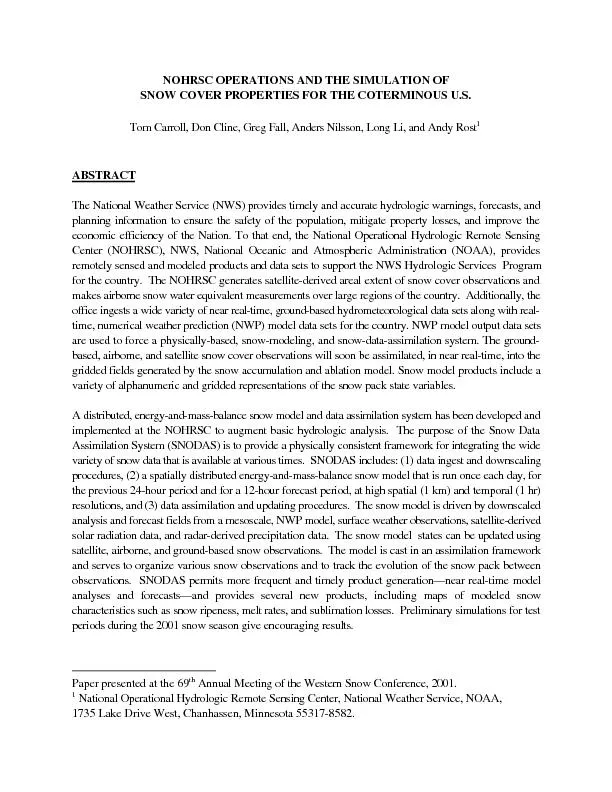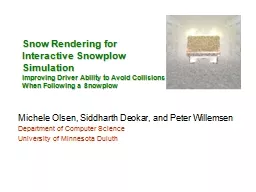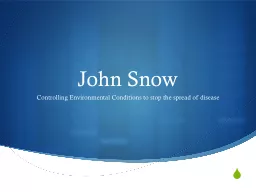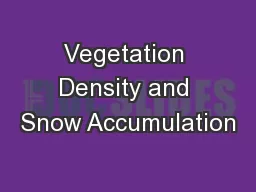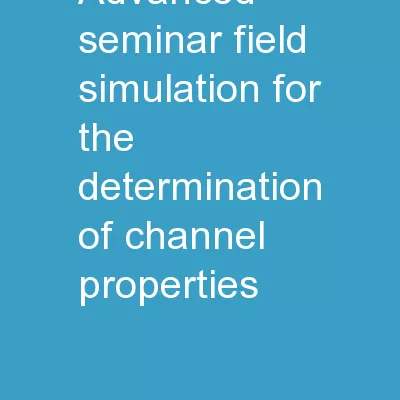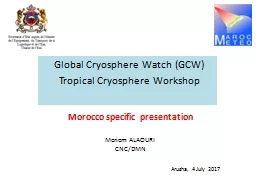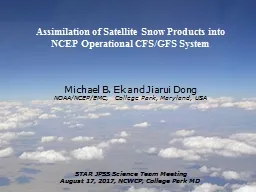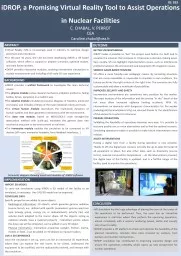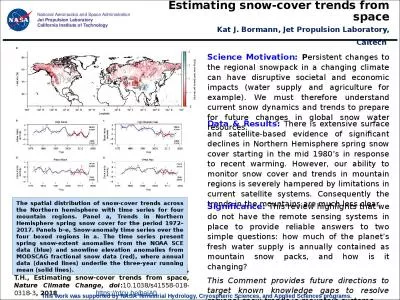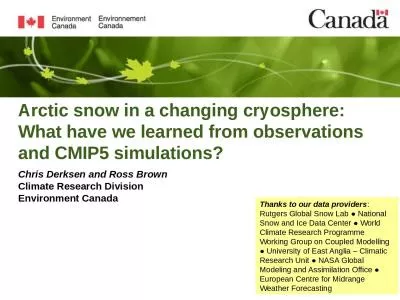PDF-NOHRSC OPERATIONS AND THE SIMULATION OF SNOW COVER PROPERTIES FOR THE COTERMINOUS US
Author : alexa-scheidler | Published Date : 2017-03-29
The National Weather Service NWS provides timely and accurate hydrologic warnings forecasts andplanning information to ensure the safety of the population mitigate
Presentation Embed Code
Download Presentation
Download Presentation The PPT/PDF document "NOHRSC OPERATIONS AND THE SIMULATION O..." is the property of its rightful owner. Permission is granted to download and print the materials on this website for personal, non-commercial use only, and to display it on your personal computer provided you do not modify the materials and that you retain all copyright notices contained in the materials. By downloading content from our website, you accept the terms of this agreement.
NOHRSC OPERATIONS AND THE SIMULATION OF SNOW COVER PROPERTIES FOR THE COTERMINOUS US: Transcript
Download Rules Of Document
"NOHRSC OPERATIONS AND THE SIMULATION OF SNOW COVER PROPERTIES FOR THE COTERMINOUS US"The content belongs to its owner. You may download and print it for personal use, without modification, and keep all copyright notices. By downloading, you agree to these terms.
Related Documents

